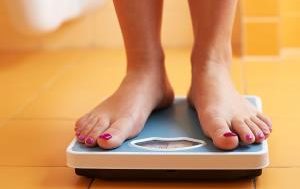The “whoosh effect” is a term that some people following a ketogenic, or keto, diet use to describe the seemingly sudden weight loss that occurs.
This article looks into what the whoosh effect is, what the research says about it, and the potential risks of following a keto diet for weight loss.

According to some social media sites and blogs, the whoosh effect is a term that describes the noticeable weight loss that occurs when following a specific diet — particularly the keto diet.
The idea behind it is that when a person burns fat, the fat cells lose fat but fill up with water. People claim that this makes the body feel loose or wobbly to touch.
People then report that after losing enough fat, the cells will gradually increase their water to fat ratio until they are all water. Then, the body will release the water from the cells through urine or diarrhea.
Some people believe that when the body expels this excess fat and water, it will be noticeably slimmer.
When the body burns fat, fat cells do not fill with water. Fat cells, or adipose tissue, store excess energy. When the body burns more calories than it takes in, the body expels excess fat and the fat cells shrink.
In fact, when a person loses weight, the body converts most of the fat into carbon dioxide, which a person expels when breathing out.
Although the body does convert a much smaller percentage into water, there is no evidence to suggest that the cells begin “filling with water” and suddenly disappear when they no longer contain any fat.
The whoosh effect that people claim to experience may actually be due to losing “water weight.”
If the body becomes dehydrated, it begins to store water. This can make people feel more bloated or heavier than they would usually.
Once a person drinks enough water, they will lose the excess water weight, which can appear as a noticeable loss of weight.
The keto diet consists of eating foods that are high in fat and contain a moderate amount of protein. The diet heavily restricts carbohydrates, however, with many people aiming to eat no more than 50 grams of carbs per day.
A typical keto diet may include:
- meat, including both lean meats and those high in saturated fats, such as bacon
- eggs
- avocados
- nuts
- seeds
- tofu
- olive oil
- palm and coconut oil
- lard and butter
- cocoa butter
- small amounts of certain fruits, such as berries
- leafy green vegetables, such as kale and spinach
- other vegetables, such as mushrooms, broccoli, and peppers
People may follow a keto diet to lose weight. This is because restricting carbs and eating more fat changes the fuel our body uses for energy.
Carbs provide the body with glucose, which it uses for energy. While following a keto diet, the body does not receive enough carbs to rely on them for energy. This means that the body turns to chemicals called ketones instead. The liver produces ketones from stored fat.
When the body starts using ketones for energy instead of glucose, the body enters a state of ketosis. This means that the body burns fat for its main source of energy.
Also, doctors may sometimes recommend a keto diet as a medical tool to help people with epilepsy manage their symptoms.
Following a keto diet to experience the whoosh effect is not a scientifically proven method for losing weight.
That said, a person may experience sudden, noticeable weight loss if they lose a lot of water weight. They may also lose weight gradually when cutting calories or carbs but only notice the weight loss suddenly on the scale.
Many factors affect the number on the scale, including the time of day, whether or not a person has eaten, hormones, clothing, and more.
Although they can be an effective weight loss method for some people, keto diets do have some risks. According to the Academy of Nutrition and Dietetics, for example, these diets are not safe for people who:
- have pancreatic disease
- have liver conditions
- have thyroid issues
- have any current or previous eating disorders
- have gallbladder disease or no gallbladder
- are pregnant or breastfeeding
- have existing kidney disease
Even for people with no underlying health conditions, keto diets can cause side effects. For example, they are very high in saturated fats, which can raise the levels of unhealthful cholesterol in the body and increase the risk of heart disease.
Short-term side effects of a keto diet can include flu-like symptoms. For example, a person may experience:
- upset stomach or a stomachache
- headaches
- fatigue
- dizziness
- difficulty sleeping
- confusion
- irritability
A low carb diet can also cause people to experience mood changes and a lack of focus, as the brain needs sugars to function properly.
Restricting carbs may mean that a person does not consume enough fruits, vegetables, or whole grains. This means that people often do not get enough fiber while following a keto diet. A lack of fiber can cause constipation and other bowel problems.
Cutting down on fruits and vegetables can also cause nutritional deficiencies. People following a keto diet may be low in vitamins and minerals such as:
Some long-term health risks from following a keto diet can include kidney stones and liver disease. This is because a diet high in fat and protein can overload these organs and worsen existing conditions.
Anyone thinking of adopting a keto diet for weight loss should first speak to a doctor or registered dietitian.
The “whoosh effect” is a term for the noticeable weight loss that some people report while following low carb diets such as a keto diet.
Some people believe that the whoosh effect happens when fat cells lose fat and fill with water. Researchers have not scientifically proven the whoosh effect, however.
Noticeable weight loss can be due to losing water weight. Gradual weight loss can also occur as a person cuts calories and carbs.
Following a keto diet for weight loss may also have more risks than benefits. For example, keto diets are high in saturated fat and may result in nutritional deficiencies due to the restriction of certain food groups.
People considering a keto diet should speak with a health professional first.


